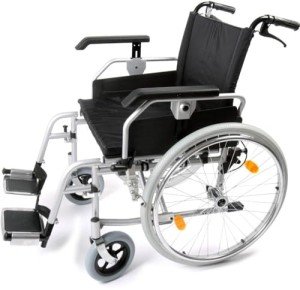7 Tricks To Help Make The Most Out Of Your Bariatric Folding Wheelchair

Bariatric Folding Wheelchair
Bariatric folding wheelchairs are designed to accommodate users of a bigger size. They feature a higher weight capacity than basic models and are developed with enhanced materials for added stability and longevity.
Nevertheless, not everyone with a high body mass index (BMI) requires a bariatric chair as many fall within the safe weight limits of basic wheelchairs.
Size and Weight Capacity
Bariatric wheelchairs have larger seats and are created to accommodate bigger people, normally weighing up to 500 pounds. These chairs have a heavy-duty frame made from reinforced products like steel and are constructed with larger wheels that supply more weight distribution and maneuverability for bigger users.

When comparing bariatric wheelchairs, ensure the weight capacity is listed as fixed or active load. Fixed weight capacity refers to how much a chair can hold when it's sitting still, while active load capacity is figured out by putting the chair through a drop test that imitates somebody plopping down into the seat.
Standard wheelchairs are extensively produced and designed for users with typical body weights, making them more economical than bariatric models. Medicare and other insurances might only cover a minimal variety of bariatric wheelchairs, depending upon a client's medical requirements and medical diagnosis. These chairs are also more costly than basic wheelchairs because they have a customized design and building and construction. However, they are a terrific solution for clients with a large range of medical conditions that need a more comfortable travel experience.
Seat Dimensions and Comfort
Unlike standard wheelchairs, bariatric designs have wider seats to accommodate larger people. They likewise have more robust frames and large, long lasting wheels that can stand up to higher loads. They can be customized with different seating choices and accessories based on the user's requirements and preferences.
When comparing wheelchairs, it's important to take a look at their weight capabilities under both static and active load scores. Fixed load refers to the chair's maximum capacity when it's sitting still, while active load steps just how much a wheelchair can safely hold when someone sits in it and moves around. Some manufacturers might also display the weight limit of a bariatric wheelchair in kgs, which is frequently more precise because it considers the typical bodyweight of a person who utilizes the chair.
In addition to a broad seat, a bariatric folding wheelchair should have adjustable cushioned leg rests to help users remain comfy while taking a trip. It needs to also have flip up armrests that can be vacated the method to avoid getting in the user's method when they wish to stand or move to another surface.
If you're considering a bariatric wheelchair, ask a healthcare company or mobility specialist for recommendations. They can assess your requirements, advise the ideal chairs for you, and guide you through the process of purchasing one. They can also help you compare functions and rates to find a wheelchair that best fits your budget plan. They can even provide guidance on other mobility solutions such as power placing systems and iLevel seating.
Weight and Portability
While basic wheelchairs are normally affordable, bariatric chairs tend to be a bit more expensive. This is because of their specialized design and construction, along with the reality that they're a little heavier than their equivalents.
If you're worried about the expense of a bariatric chair, talk to a health care company or mobility expert. They'll be able to evaluate your unique needs and determine which type of wheelchair is the best fit for you. They can likewise advise wheelchair devices based on your particular requirements. Additionally, if you're seeking to get your wheelchair covered by insurance coverage, such as Medi-Cal, they can guide you on the steps involved in this process. For additional information, read our guide to wheelchair insurance coverage. Then, you can begin your journey towards independent mobility.
Manoeuvrability and Handling
Picking the best wheelchair can be a crucial choice for those with minimal mobility. bariatric living aids provide increased weight capabilities and are developed to accommodate larger people. They typically feature bigger wheels, wider armrests and seating choices, and are sturdier than basic wheelchairs.
When picking a bariatric wheelchair, consider the individual's specific needs and the environment in which they will be using it. Assess the weight capacity and seat measurements, and look for adjustable functions like padded raising leg rests to support comfort and ease of transfer.
Figure out whether the wheelchair is appropriate for manual or powered usage. For included versatility, a bariatric folding wheelchair can be easily folded and compacted for storage or transport. This makes them an ideal option for those with restricted home space or who require to travel cross countries. The wheelchairs likewise include leak evidence wheels to guarantee toughness and low upkeep. Appropriate for users as much as an optimum of 35 stone.
